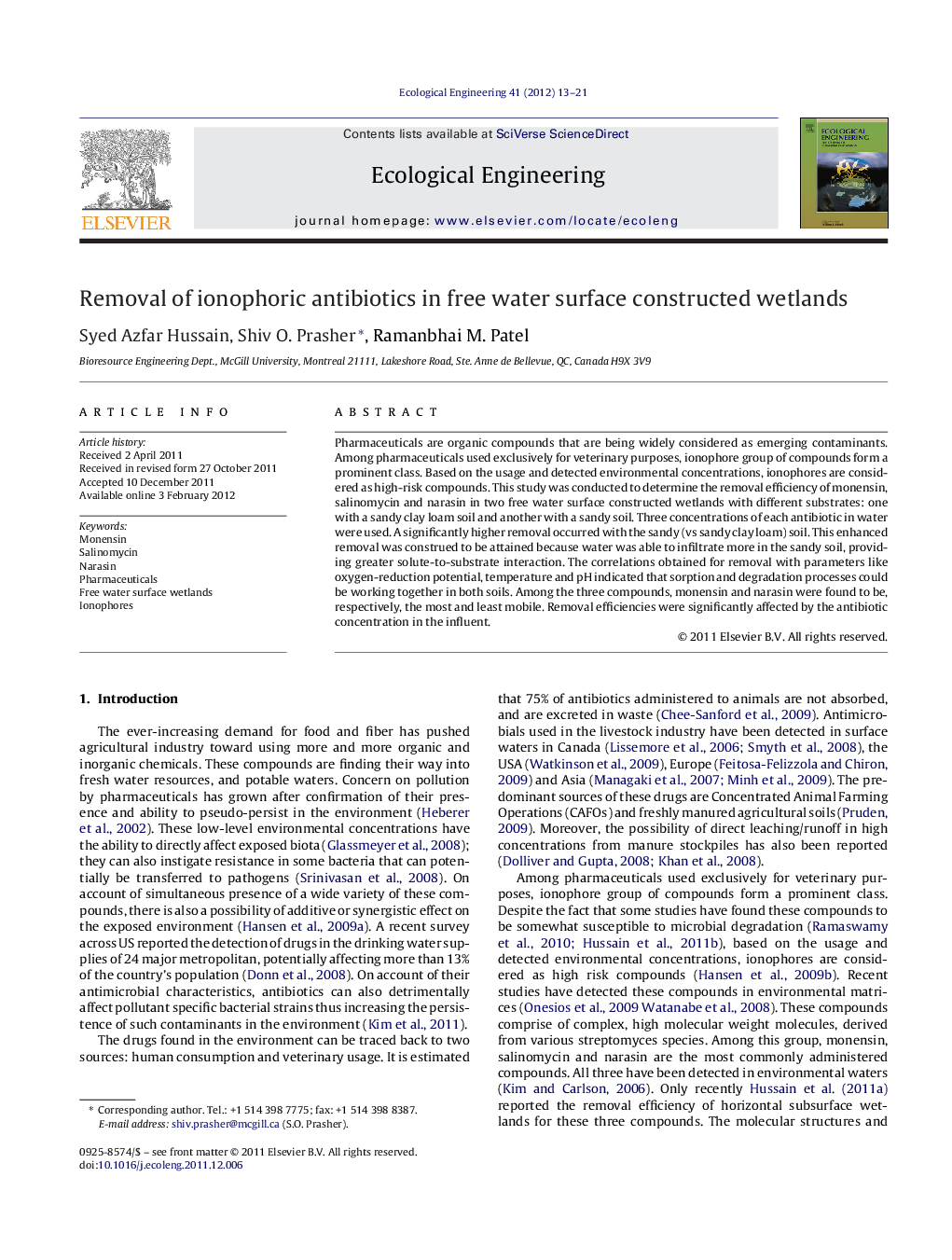| کد مقاله | کد نشریه | سال انتشار | مقاله انگلیسی | نسخه تمام متن |
|---|---|---|---|---|
| 4390074 | 1618057 | 2012 | 9 صفحه PDF | دانلود رایگان |

Pharmaceuticals are organic compounds that are being widely considered as emerging contaminants. Among pharmaceuticals used exclusively for veterinary purposes, ionophore group of compounds form a prominent class. Based on the usage and detected environmental concentrations, ionophores are considered as high-risk compounds. This study was conducted to determine the removal efficiency of monensin, salinomycin and narasin in two free water surface constructed wetlands with different substrates: one with a sandy clay loam soil and another with a sandy soil. Three concentrations of each antibiotic in water were used. A significantly higher removal occurred with the sandy (vs sandy clay loam) soil. This enhanced removal was construed to be attained because water was able to infiltrate more in the sandy soil, providing greater solute-to-substrate interaction. The correlations obtained for removal with parameters like oxygen-reduction potential, temperature and pH indicated that sorption and degradation processes could be working together in both soils. Among the three compounds, monensin and narasin were found to be, respectively, the most and least mobile. Removal efficiencies were significantly affected by the antibiotic concentration in the influent.
► Among the sandy clay loam and sandy soil CWs, removal of tested ionophores was greater in sandy soil.
► Phenomena of sorption and microbial degradation were proposed to be the dominant removal mechanisms.
► Removal rates were significantly correlated with temperature, pH and ORP.
► Monensin and narasin ionophores were found to be the most and least mobile compounds, respectively.
Journal: Ecological Engineering - Volume 41, April 2012, Pages 13–21